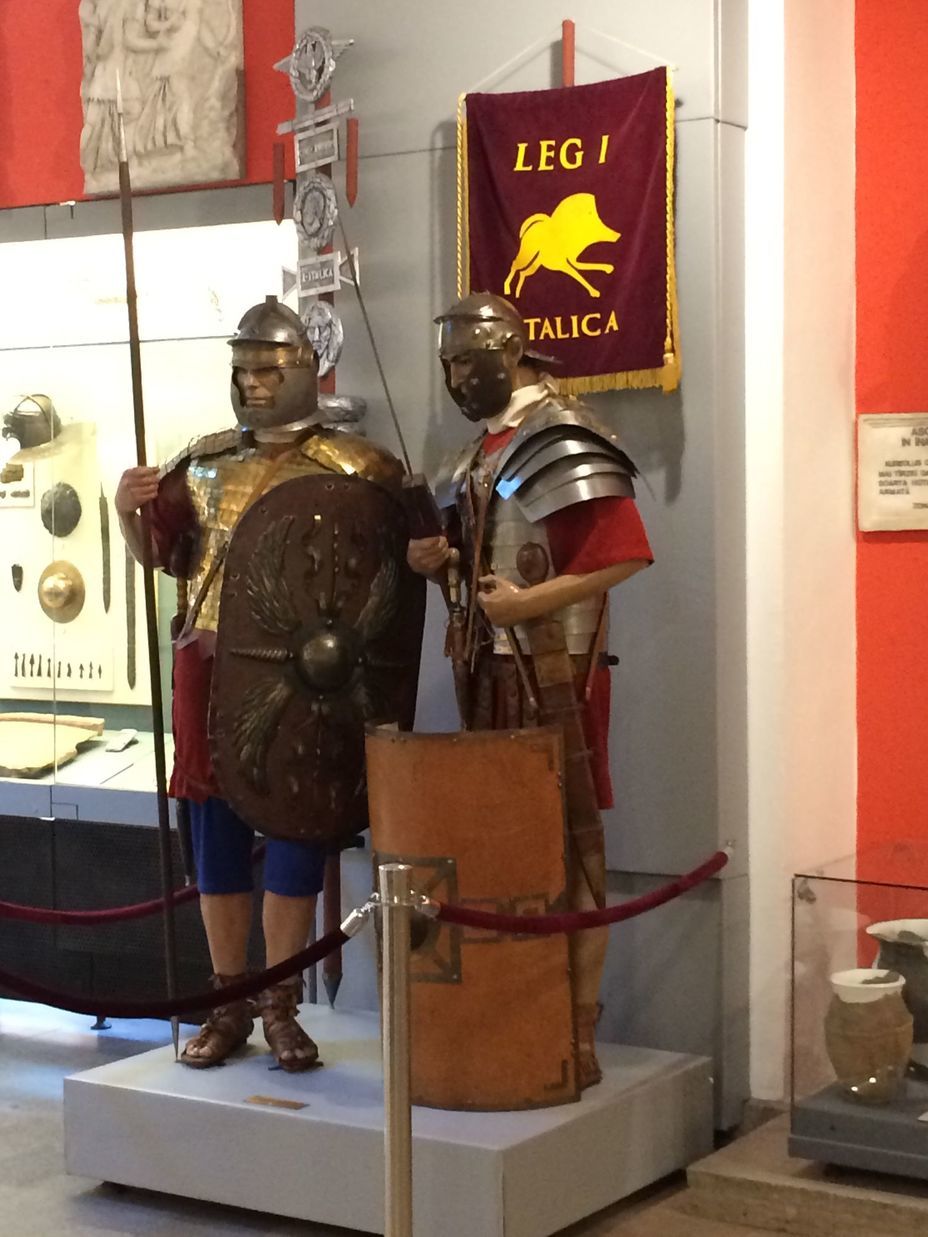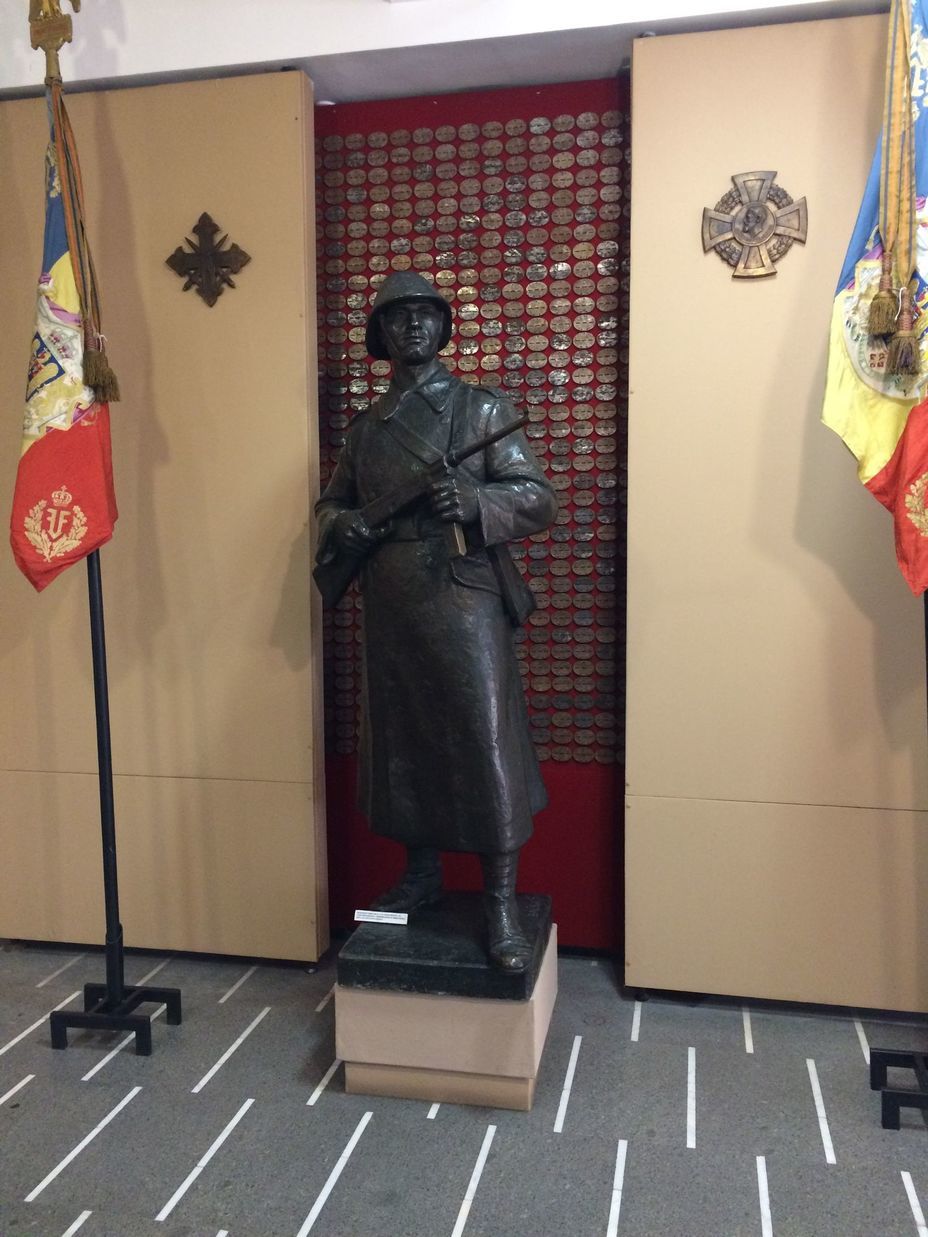Romania was the only ally of Russia on the Eastern front of the First World War, participated in the Second World War from 1941 to 1945, putting up considerable forces, first on the side of Nazi Germany, and then on the side of the Allies. At the same time, the military history of Romania is not at all limited to world wars. The best place to learn more about her is the National War Museum in Bucharest.
For a long time, independent Romania did not have a special military history museum. The situation changed only after the First World War, although Romanian participation in it was not marked by many victories. Be that as it may, the country was on the side of the victors, expanded its territory, and the courage of Romanian soldiers and officers during the war well overshadowed the mediocrity of the top leadership.
Already in 1919, an exhibition dedicated to the First World War was housed in the Palace of Arts on the outskirts of Bucharest and the buildings adjacent to it. In May 1923, the Tomb of the Unknown Soldier appeared in front of the palace, and on December 18, 1923 (on the fifth anniversary of the unification of the Romanian lands) the temporary exhibition became the official National Military Museum.
In the summer of 1938, a fire damaged the museum building, and it temporarily suspended its work. During a strong earthquake on November 10, 1940, the former Palace of Arts was so damaged that the work of the museum was stopped altogether. They decided to dismantle the damaged building and create the Heroes' Cemetery in its place, of which a new museum was to become a part. Work began in 1943 — by this time Romania was again participating in the World War, and after heavy losses near Odessa and Stalingrad, there were enough fallen soldiers in the country. But in 1944, Romania changed its political orientation 180 degrees, going over to the side of the anti-Hitler coalition. Under such conditions, the glorification of the war against the Soviet Union became very politically incorrect, and in the fall of 1944, work on the creation of the cemetery and museum has ceased.
With the communists coming to power in Romania, the issue of creating a military museum again appeared on the agenda. The new museum opened in 1950, and in 1957 moved to the former building of the Cavalry School south of the city center. But in the 1970s, the Romanian dictator Nicolae Ceausescu decided to turn Bucharest into an exemplary socialist city, rebuilding it according to the modern model. Old building of the military museum was demolished and in 1986 museum had to move to new premises — the former barracks of the 21st Infantry Regiment of the Royal Romanian Army to the west of the city center. A monument to the soldiers of this regiment still stands at the walls of the museum.
Judging by the appearance, the main exposition of the museum has changed little since 1988. For the period after 1916, materials on royal Romania and the 1989 revolution have been added, while parts of the exhibition, glorifying the communists and personally Ceausescu, have been removed. But the period until 1916 was left almost unchanged — the times of Roman rule and the exploits of medieval warriors in Romania were respected both under the communists and under the democrats.
The main exposition of the museum is presented in chronological order, from ancient times to the modern participation of Romanian soldiers in peacekeeping operations. There are lots of interesting exhibits here. Where there are not enough original items, high-quality replicas, models, drawings, small dioramas are used. At the same time, the museum stores enough exhibits to regularly organize various temporary exhibitions. However, there is a distinct lack of space for expanding permanent exhibition.
It is pleasant to note that the exposition of the museum is not just a collection of objects. Almost every section of it is provided with an illustrated introduction, which makes it possible to understand its context even to the uninitiated in Romanian military history. Both introductions and caption to the exhibits are given in Romanian and English. It is curious that the closer to modernity, the worse these introductions become. Only a few exhibits and photographs are dedicated to the army participation in the 1989 revolution, and the fact that the Romanian army participates in peacekeeping operations abroad and suffers losses there, the visitor learns only from a small memorial with photographs of the dead, located on the staircase.
The main exhibition is only part of the museum. In a separate building there are collections of weapons (cold weapons and firearms) and uniforms. Given Romania's turbulent past, the collection of weapons is quite diverse. The highlight of the exhibition is the collection of hunting weapons of the Romanian rulers. The kings of Romania loved to hunt, and this activity was also popular among the communist leaders — in the collection you can find hunting weapons of the 19th and 20th centuries. The collection of uniforms at least partially consists of remakes (the excellent preservation of all elements of the 19th century uniform cannot be explained by anything else), but it gives a unique opportunity to see the evolution of the Romanian military uniform from the 19th to the end of the 20th century.
In a separate hangar there is an exhibition of motor vehicles, carriages, royal carriages and even a small steam locomotive of the field railway. Another hangar contains a collection of aviation equipment (some of the planes and helicopters still had to stay are outside). Special emphasis in both expositions is placed on the weapons of the Romanian production — those exhibits cannot be found in other countries.
The museum collection of artillery pieces and armored vehicles is so huge, that they did not even try to place it under the roof, so it is scattered throughout the museum courtyards. With whom Romania did not make friends and did not fight, from whom did it not buy and capture tanks and guns in the twentieth century! Among the exhibits is a unique Austrian-made 420-mm mortar, which came to the Romanians after the First World War. In addition, in the courtyard there are not so impressive, but no less unique examples of Romanian armored vehicles, as well as a number of missiles and naval weapons. Unfortunately, the preservation of some of the exhibits in the open air leaves much to be desired.
The National Military Museum of Romania is located in Bucharest at Strada Mircea Vulcănescu 125-127 and is open from 10:00 am to 4:00 pm from Wednesday to Sunday. The cost of visiting the exposition is 10 lei (about 2.5 US dollars). The museum has three branches in the cities of Oradea, Constanta and Bacau. Museum website: https://www.muzeulmilitar.ro/en/
































